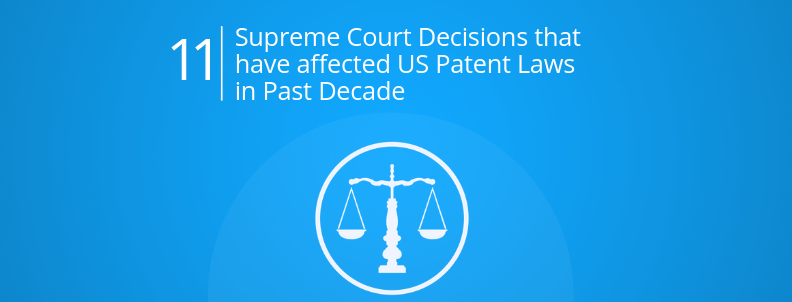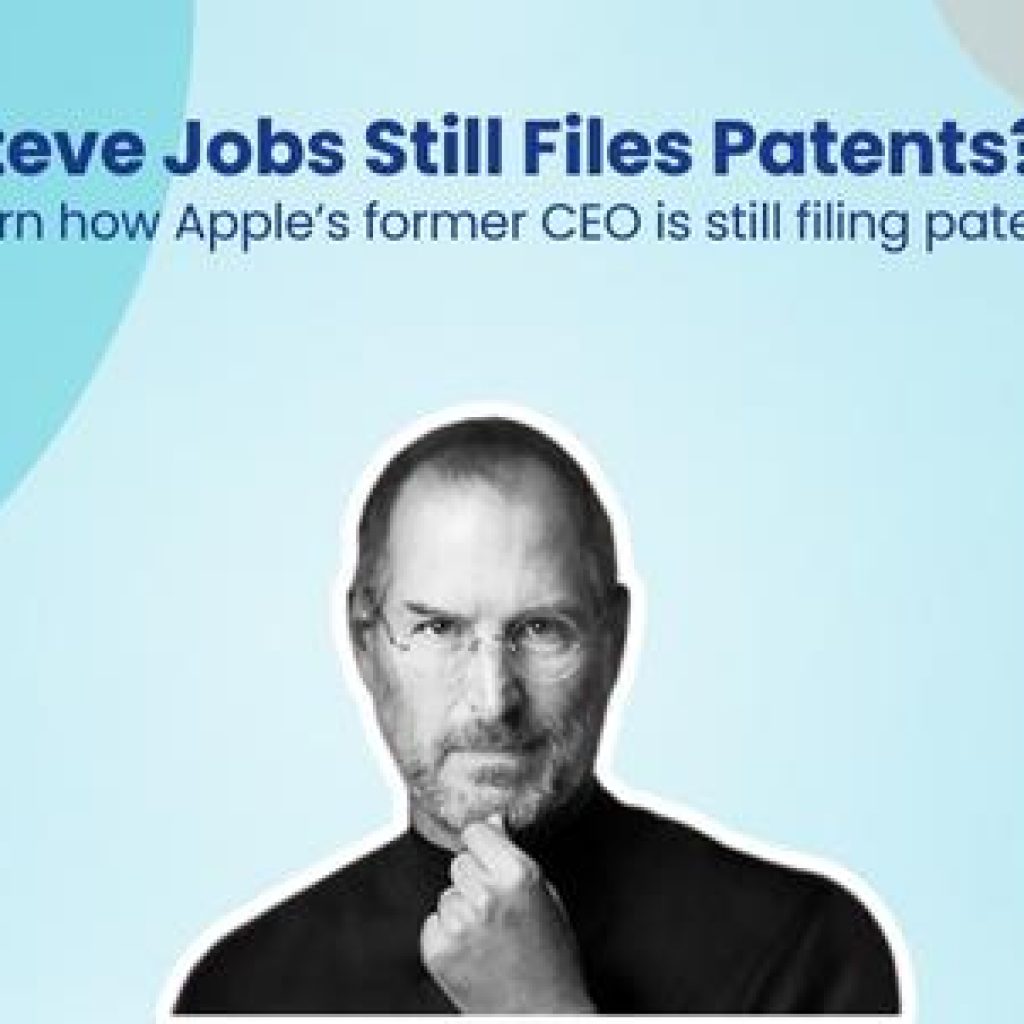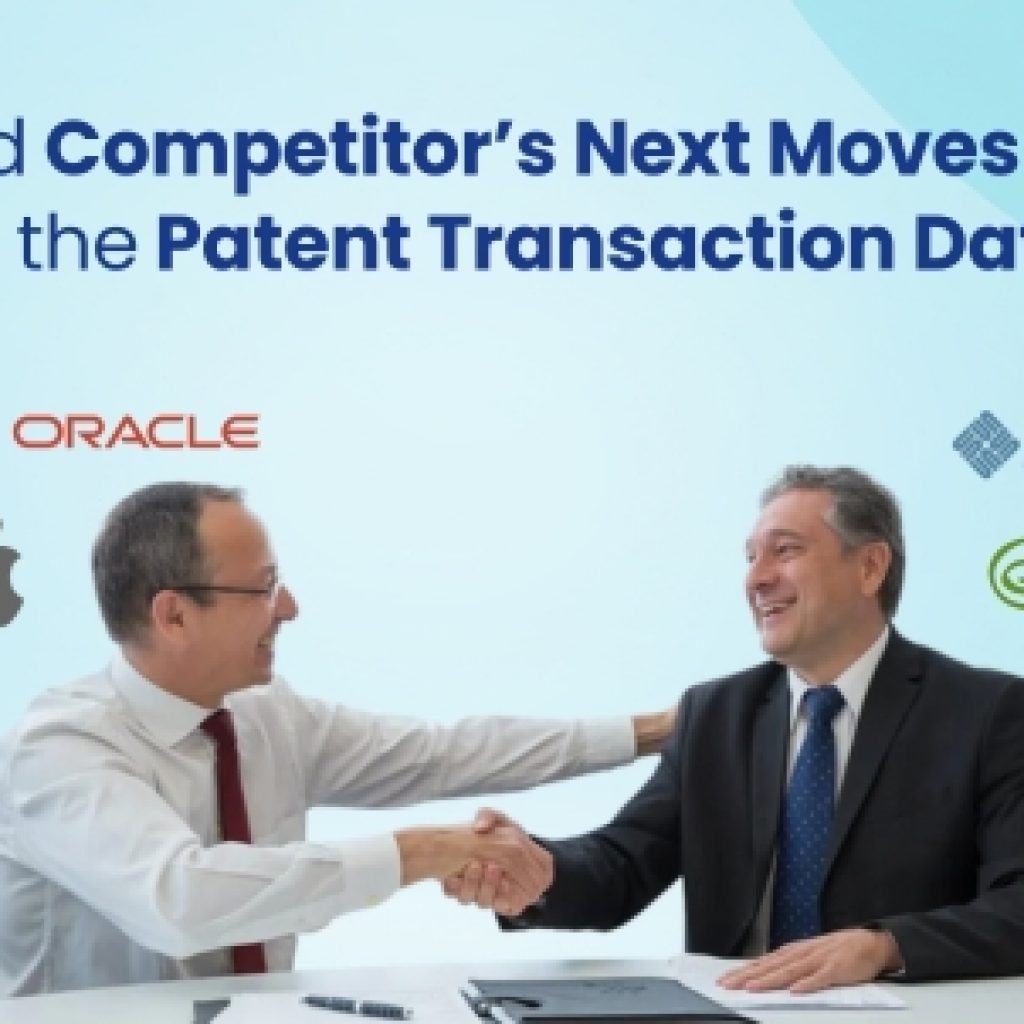In the dispute between Helsinn Healthcare v Teva Pharmaceutical, the Supreme court unanimously decided and affirmed the Federal Circuit decision to consider a secret sale as prior art. The decision led the case to become one of the famous Supreme Court patent cases.
It all started when Helsinn began developing a drug-using palonosetron to treat chemotherapy-induced nausea and vomiting. It entered into a license agreement and a supply-purchase agreement with MGI Pharma and required MGI to keep the dosage information confidential. Both companies announced their deal publicly but the press release did not disclose the specific dosage formulations. Two years later Helsinn filed a patent application covering two doses of palonosetron.
Years later, Teva Pharmaceuticals sought FDA approval to market a generic palonosetron product using one of Helsinn’s dosages. Helsinn sued Teva, alleging that their product infringed its patent. While the district court ruled in Helsinn’s favor, the case when appealed, the federal court reversed the decision. The Federal court deemed the patent invalid on the grounds that “a commercial sale to a third party who is required to keep the invention confidential may place the invention ‘on sale’ under §102(a). The Supreme court affirmed the ruling.
The decision won’t affect large companies a lot, but the situation is surely going to be tricky for small companies as they are dependent on others for improving their products through tests and trials. Moreover, it raises the question – Does an inventor’s sale of an invention to a third party who is obligated to keep the invention confidential qualify as prior art for purposes of determining the patentability of the invention?
This isn’t the first time that a decision has become a struggle for a research company or industry. There are many decisions given by SCOTUS which either proved to be a boon or a disaster for an industry.
And for the last ten years, the Supreme Court has given decisions to many patent litigations that affected the patent law to the core.
This article talks about the famous Supreme Court patent cases, one per year, from the last 10 years given by SCOTUS and how those decisions affected the IP industry and different research industries.
Here is the table of content, in case you’re interested in particular litigation (Click to navigate):
MedImmune, Inc. v. Genentech, Inc. – (2007)
The patent dispute’s subject matter was whether a licensee can challenge the patentability of a licensor patent even when the license agreement is going on.
The case also indirectly argued whether the US should change the first-to-file patent system.
In 1997, MedImmune had a license agreement with Genentech for US4816567, which expired in 2006. Genentech had a pending continuation application of Cabilly II.
But in 2006, MedImmune refused to give royalty, arguing that they improperly extended the expiry date of the patent. Hence, Genentech sued MedImmune.
MedImmune filed for Declaratory Judgment, but the district court dismissed the request for lacking subject matter.
MedImmune appealed to the Supreme Court, which finally rejected two arguments presented by Genentech. Justice Scale gave the opinion of the court:
Gen-Probe had held that a patent licensee in good standing cannot establish an Article III case or controversy with regard to validity, enforceability, or scope of the patent because the license agreement “obliterate[s] any reasonable apprehension” that the licensee will be sued for infringement. Id., at 1381. The Federal Circuit affirmed the District Court, also relying on Gen-Probe. 427 F. 3d 958 (2005). We granted certiorari. 546 U. S. 1169 (2006).
We hold that petitioner was not required, insofar as Article III is concerned, to break or terminate its 1997 license agreement before seeking a declaratory judgment in federal court that the underlying patent is invalid, unenforceable, or not infringed. The Court of Appeals erred in affirming the dismissal of this action for lack of subject-matter jurisdiction.
While this decision was a boon for licensees, it’s certainly a big problem for the patent owners because now a licensee is no longer required to terminate or materially breach its licensee agreement to bring a suit challenging the validity or infringement of a patent.
Quanta Computer v. LG Electronics – (2008)
The Supreme Court issued the decision against LG Electronic and favored the patent exhaustion doctrine validity that applied to an authorized sale of components included in a patent process.
LG sued Quanta for patent infringement stating that Quanta used its patented products, which they had licensed to Intel. LG and Intel had a licensing agreement according to which Intel could manufacture or sell the microprocessor using LG’s patent. Quanta purchased licensed microprocessor products from Intel for making computers. Since Intel’s products were found without any reasonable non-infringing use by a trial court, LG sued Quanta for patent infringement.
The district court favored Quanta as per the exhaustion doctrine, but the Federal Circuit reversed the court’s decision by implying that the exhaustion can’t apply here because of the Master Agreement between Intel and LG that combined products would not be licensed.
Justice Thomas delivered the Supreme Court’s 19–page unanimous decision, stating:
The authorized sale of an article that substantially embodies a patent exhausts the patent holder’s rights and prevents the patent holder from invoking patent law to control postsale use of the article. Here, LGE licensed Intel to practice any of its patents and to sell products practicing those patents. Intel’s microprocessors and chipsets substantially embodied the LGE Patents because they had no reasonable noninfringing use and included all the inventive aspects of the patented methods. Nothing in the License Agreement limited Intel’s ability to sell its products practicing the LGE Patents. Intel’s authorized sale to Quanta thus took its products outside the scope of the patent monopoly, and as a result, LGE can no longer assert its patent rights against Quanta. Accordingly, the judgment of the Court of Appeals is reversed.
Ultimately, this became another one of the famous Supreme Court patent cases, and while the court cleared the facts, the decision lacked a certain amount of clarity which left the patent owners to wonder how they could avoid the exhaustion doctrine.
Bilski v. Kappos – (2010)
The Supreme Court gave judgment against Bilski by implying that the patent application claims were not eligible as they covered an abstract idea of a business method. The court also described that the machine-or-transformation test was not the sole test to check the patent’s eligibility for §101.
Bilski’s patent covers the business method for hedging risks for commodities trading. The patent office rejected the patent application for covering an abstract idea of doing business. Bilski appealed to Federal Circuit, which also rejected their application after doing a “machine-or-transformation test” for eligibility.
Bilski approached the Supreme Court, where the court also gave the decision against it, but with different reasoning, which according to Patently-o, is:
‘the Supreme Court affirmed that Bilski’s risk-management method was not the type of innovation that may be patented. However, rather than using the Federal Circuit’s “machine-or-transformation test”, the court simply relied on prior precedent to find the claimed method unpatentably abstract.’
Despite the decision, SCOTUS has failed to determine any criteria to limit these patents or give clear guidance on how business method patents can be applied.
Microsoft Corp. v. i4i Ltd. Partnership – (2011)
In June 2011, the Supreme Court gave the judgment that the patent-in-reexamination is still valid without any exception under 35 USC 282 and rejected the evidence provided by Microsoft to invalidate the patent of i4i Ltd. The court arguably said the evidence should be clear and more convincing than a normal civil case.
i4i sued Microsoft for infringing its patent, which covers the editing of documents containing markup languages like XML that Microsoft Word also does.
As per the Federal Circuit’s standard of proof rule, they rejected Microsoft’s argument. Microsoft appealed to the Supreme Court to determine whether the Federal Circuit decision was correct.
Unfortunately, the Supreme Court held that Section 282 required an invalidity defense to be proved by clear and convincing evidence and upheld Federal Circuit’s decision.
Justice Sonia Sotomayor delivered the opinion of the Court.
Nevertheless, I reach the same outcome as the Court. Because §282 is silent as to the standard of proof, it did not alter the common-law rule. See ante, at 6 (“[§282] includes no express articulation of the standard of proof”). For that reason, I agree with the Court that the heightened standard of proof set forth in Radio Corp. of America v. Radio Engineering Laboratories, Inc., 293 U. S. 1 (1934)—which has never been overruled by this Court or modified by Congress—applies.
Mayo Collaborative Services v. Prometheus Laboratories, Inc. – (2012)
The SCOTUS gave a judgment to clarify that increasing or decreasing a drug dose to a patient was not eligible to be the patent subject matter.
The bone of contention of this litigation was a drug named Thiopurine which is used to treat various illnesses, such as leukemia and autoimmune disorders. But, it the amount of dose of the drug to give a patient was unknown until Prometheus found the right amount and obtained two patents. Later Mayo used the procedures followed by the Prometheus’ patent until 2004 when Mayo went for their own tests.
After finding that, Prometheus sued Mayo in district court. But the court gave the decision in favor of Mayo stating the Prometheus patent claimed natural phenomenon which was not patentable.
Prometheus went to Federal Circuit which reversed the district court judgment. After the case went to Supreme Court, the court unanimously claimed that the patents were not eligible to be subject matter, as explained by Justice Breyer:
We find that the process claims at issue here do not satisfy [the conditions for patent eligibility]. In particular, the steps in the claimed processes (apart from the natural laws themselves) involve well-understood, routine, conventional activity previously engaged in by researchers in the field. At the same time, upholding the patents would risk disproportionately tying up the use of the underlying natural laws, inhibiting their use in the making of further discoveries.
The judgment was a disappointment, according to many, and multiple patent lawyers and industrialists disregarded the judgment, thus adding it to the list of famous Supreme Court patent cases.
Gene Quinn, a well-known patent attorney and founder of IPWatchDog described the decision as terrible. He added:
Those in the biotech, medical diagnostics and pharmaceutical industries have just been taken out behind the woodshed and summarily executed by the Supreme Court this morning. An enormous number of patents will now have no enforceable claims. Hundreds of billions of dollars in corporate value has been erased.
Kevin Noonan, a biotech patent lawyer and editor of the Patent Docs blog, criticized this decision and wrote:
It is also clear that the Court has little time for the specifics of patent law generally, not surprising from a Court who characterized obviousness law as “gobbledygook” not so many years ago. . . . The Court also signaled its willingness to credit their theories of what drives and sustains innovation against the arguments, based on actual experience, from groups and individuals who have created companies and been involved in innovation in the biotechnology industry. And the Court seems equally ready to be influenced by the consumers of innovation, such as amicus the American Medical Association, who understandably wish to have the maximum freedom to have their patients benefit from new technology.
Association for Molecular Pathology v. Myriad Genetics – (2013)
The patent dispute led to the invalidation of two patents of Myriad Genetics when Supreme Court gave the judgement against them. Before this decision, the USPTO used to accept the gene patents as a composition of matters but after this case, drug screening claims have become too difficult to approve.
The case started in the Southern District Court of New York which invalidated the Myriad patent claims saying that the isolated genes are a product of nature and thus unpatentable.
The patent owners appealed to the Federal Circuit which favored them by implying that isolated gene doesn’t exist alone and need a participate, so it can be patentable but the diagnostic claims were not patent-eligible.
The plaintiff went to Supreme Court, and after hearing arguments, the court unanimously gave judgment stating that isolated genes are found in nature, so it isn’t patentable, however complementary DNA can be patented because it does not occur naturally.
Justice Thomas delivered the opinion of the Court stating:
We consider the patentability of DNA in which the order of the naturally occurring nucleotides has been altered. Scientific alteration of the genetic code presents a different inquiry, and we express no opinion about the application of §101 to such endeavors. We merely hold that genes and the information they encode are not patent eligible under §101 simply because they have been isolated from the surrounding genetic material.
The decision proved to be a blessing for medical companies as almost immediately after the Supreme Court ruled, several laboratories announced they, too, would begin offering genetic testing for breast cancer risk, making it likely that that test could become more affordable and more widely available. The case changed the history for medical companies, thus becoming one of the most famous Supreme Court patent cases to this date.
Alice vs CLS Bank – (2014)
Alice vs CLS Bank was a decision by SCOTUS on the eligibility of patent subject matter. When filed in the district court, the jury decided that Alice’s 4 patents on financial trading were invalid because its claims cover an abstract idea and should not have been granted in the first place.
Alice appeared in the Federal Circuit, which vacated the lower court judgment. Still, it set the case for re-argument that some questions need to be answered to check the patent-eligibility of an abstract idea. The five juries supported Alice while five others discarded the patent eligibility.
Then, Supreme Court intervened in the case with five judges who first decided to do a test focusing on finding the abstract idea implied on the claim and then checking whether the claim is patentable. The court did a two-step analysis and the judges gave their votes against Alice.
Justice Sotomayor, with whom Justice Ginsburg and Justice Breyer joined, concurring:
I adhere to the view that any “claim that merely describes a method of doing business does not qualify as a ‘process’ under §101.” Bilski v. Kappos, 561 U. S. 593, 614 (2010) (Stevens, J., concurring in judgment); see also In re Bilski, 545 F. 3d 943, 972 (CA Fed. 2008) (Dyk, J., concurring) (“There is no suggestion in any of th[e] early [English] consideration of process patents that processes for organizing human activity were or ever had been patentable”). As in Bilski, however, I further believe that the method claims at issue are drawn to an abstract idea. Cf. 561 U. S., at 619 (opinion of Stevens, J.). I therefore join the opinion of the Court.
The case also has seen a total number of 52 Amicus Curiae participation which had a good effect on the court’s decision.
The aftermath of Alice decision can be seen now as the number of software patent reduced to a great extent and the invalidity percentage of software patents grew manifold.
In many cases, companies were still able to get their idea granted, even after once getting rejected under Alice decision. You can read about 7 such cases where parties overcame Alice rejection from here.
Also, since many organizations were struggling to pinpoint when an idea becomes abstract, we have gathered a list of another 77 patent cases analyzing which can help you do exactly that. You can explore that white paper from here.
Teva Pharmaceuticals USA Inc. v. Sandoz Inc. – (2015)
The patent dispute between these two pharmaceutical companies brought down a new change in claim construction and its interpretation and brought the new rules of claim construction, facts finding, and indefiniteness.
It all started when Sandoz filed Abbreviated New Drug Applications (ANDAs) to create a version of Copaxone, a drug owned by Teva. Teva went to the district court where the court favored the plaintiff by implying that anyone skilled in the art would understand that the molecular weight was calculated under the peak average molecular weight method.
The defendant went to Federal Circuit, which gave the decision in favor of Sandoz by raising the question of the patent claim under 35 U.S.C. § 112, i.e. indefiniteness, claim construction.
The Supreme Court held in a 7-2 decision authored by Justice Breyer that an “appellate court must apply a ‘clear error,’ not de novo, the standard of review” to the evidentiary underpinnings of a district court’s claim construction determination.
He also added:
“[A] patent is invalid for indefiniteness if its claims, read in light of the specification delineating the patent, and the prosecution history, fail to inform, with reasonable certainty, those skilled in the art about the scope of the invention.” Nautilus, Inc. v. Biosig Instruments, Inc., 572 U. S. ___, ___ (2014) (slip op., at 1). This standard falls somewhere between a notice requirement and a prohibition on ambiguity. See id., at ___ –___ (slip op., at 9–11). Determining whether a claim is indefinite is thus akin to other legal inquiries commonly performed in the course of interpreting written instruments. See, e.g., Mayo Foundation for Medical Ed. and Research v. United States, 562 U. S. 44, 52–53 (2011) reviewing without deference the district court’s determination that a statute is unambiguous at step one of Chevron U. S. A. Inc. v. Natural Resources Defense Council, Inc., 467 U. S. 837 (1984)); 11 Williston §30:5, at 75 (“The determination of whether a contract is ambiguous is a question of law for the court”). Thus, a holding that a patent satisfies the definiteness requirement does not turn on “findings of fact” as that term is used in Rule 52(a)(6), and the Court of Appeals properly applied a de novo standard of review.
The effect of SCOTUS decision soon started to appear within a year as the decision got referenced in some litigations.
Halo Electronics v. Pulse Electronics – (2016)
In June 2016, the Supreme Court issued a judgment in a patent dispute between Halo V Pulse and discarded the Federal Circuit’s Seagate test for finding willful infringement which is not consistent with Section 284 of Patent Act.
In a trial in district court, a jury found that Pulse’s infringement was willful but the court assumed no willfulness, because Pulse’s defense was not objectively baseless, therefore, the objective prong of the Seagate test was not found. The Federal Circuit also agreed with the district court decision.
But in Stryker vs Zimmer case, a jury found willful infringement and awarded the plaintiff three-fold damage.
Later, Halo appealed to the Supreme Court in which the SCOTUS rejected the Federal Circuit’s Seagate test implying that the test shields many accused infringers from punishment. The court also pointed out that the objective recklessness is not a correct procedure for finding willful infringement and concluded:
“Section 284 gives district courts the discretion to award enhanced damages against those guilty of patent infringement. In applying this discretion, district courts are “to be guided by [the] sound legal principles” developed over nearly two centuries of application and interpretation of the Patent Act. Martin, 546 U. S., at 139 (internal quotation marks omitted). Those principles channel the exercise of discretion, limiting the award of enhanced damages to egregious cases of misconduct beyond typical infringement. The Seagate test, in contrast, unduly confines the ability of district courts to exercise the discretion conferred on them. Because both cases before us were decided under the Seagate framework, we vacate the judgments of the Federal Circuit and remand the cases for proceedings consistent with this opinion.”
The effect after the post-Halo is that now patent owners more likely to pursue a willful infringement and enhanced damages. If a patent owner succeeds to show that the infringer had knowledge of infringement, the court can take it as a willful despite the reasonable defenses of the defendant at trial..
TC Heartland v. Kraft Foods Group – (2017)
In 2017, the SCOTUS gave the judgment on famous litigation between TC Heartland and Kraft Foods Group and brought a new law that is affecting the choice litigation venue to a great extent.
Justice Thomas delivered the opinion of the Court:
As applied to domestic corporations, “reside[nce]” in §1400(b) refers only to the State of incorporation. Accordingly, we reverse the judgment of the Court of Appeals and remand the case for further proceedings consistent with this opinion.
The case was followed by many industry leaders who gave their opinion about the Supreme Court decision in this IPWatchDog post.
A plaintiff’s — especially a non-patent entity –, can not wage a lawsuit in its favorite district court (Eastern Texas) as according to a new law, a defendant can only be sued in the districts where a defendant incorporates and commits an act of infringement and has a regular and established business.
The effect has already begun to take place as at the same time span of 2016 and 2017 a reduction of 15% patent litigations in Eastern Texas district court was noticed, whereas district of Delaware has seen more litigation this year compared to last year.
Oil States Energy v Greene’s Energy Group – (2018)
2018 was the year of some big patent wars in the Supreme Court of the US, but one of the most famous Supreme Court patent cases and the biggest decision of the year was that of Oil States V Greene. The much-anticipated decision, it gave to solve the 6-year-old dispute challenges the constitutional validity of the IPR process for validating patents.
When AIA was implemented in 2012, it gave the power to USPTO to challenge the validity of patents using Inter Parte Review process. Prior to AIA, a party could request USPTO to initiate full re-examination which was a costly and lengthy process.
Since its implementation, the process has been favored by large tech companies as it has become a way of tackling patent infringement challenges posed by patent trolls at a small cost.
Justice Thomas delivered the opinion:
The Leahy-Smith America Invents Act, 35 U. S. C. §100 et seq., establishes a process called “inter partes review.” Under that process, the United States Patent and Trademark Office (PTO) is authorized to reconsider and to cancel an issued patent claim in limited circumstances. In this case, we address whether inter partes review violates Article III or the Seventh Amendment of the Constitution. We hold that it violates neither.
When PTAB found the two claims of Oil States patent invalid, Oil States challenged the PTAB decision to the Federal Circuit court, both on the patentability of the claim in question as well as challenge the IPR process. The company further stated that a patent is private property and challenges to its validity is a judicial process which requires a jury.
The SCOTUS ruled 7-2 holding that:
This Court has recognized, and the parties do not dispute, that the decision to grant a patent is a matter involving public rights—specifically, the grant of a public franchise. Inter partes review is simply a reconsideration of that grant, and Congress has permissibly reserved the PTO’s authority to conduct that reconsideration. Thus, the PTO can do so without violating Article III
While the outcome was highly predicted by the Industry’s people, some still think that there is still some space for further constitutional challenges.
Conclusion
In the recent decision for Teva Pharmaceutical vs. Helsinn Healthcare, the Supreme Court affirmed the decision given by Federal Circuit, a court set up to handle such patent cases. But this is not always the case. Since 2014, the Supreme court has upheld the Federal Circuit in only two of 16 patent cases, a Reuters review showed.
This lack of agreement between the Supreme court and Federal Circuit reflects a conflict at the top US legal system over intellectual property rights, which are critical to many industries.
Its reversal of decisions issued by the Federal Circuit makes it harder to sue a company, which is highly beneficial for big companies like Apple, Samsung, and Google as they have a high chance of escaping patent infringements by “Patent trolls”.
If this pattern continues, it could be a problem for the US patent system, according to some industry people.
Authored by: Vipin Singh, Research Analyst, Market Research










